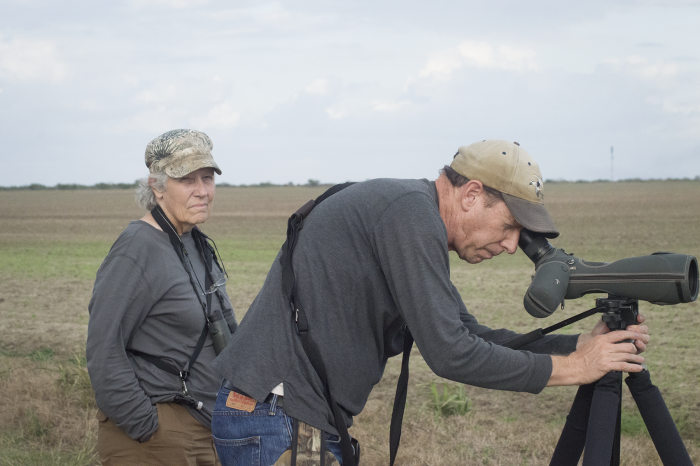First Official Jackson-Calhoun County bird count is in the books

By Jessica Coleman
Staff Writer
What is, to most people, a flit in the corner of their peripheral vision, Ron Weeks sees as a Savannah Sparrow. He can identify a Turkey Vulture or a White Tail Hawk at distances at which some people can’t even distinguish between a bird and a crop duster. He can tell you where to find any given species of bird, and what time of day they are most active. His 40 years of birding experience was put to good use on Dec. 27, during the first official Jackson-Calhoun County Christmas Bird Count.
Weeks, a Lake Jackson resident, joined 40 other birders at the Formosa Tejano Wetlands in the predawn hours of Dec. 27. Close to 300 combined years of experience graced the small classroom usually used by Jackson and Calhoun County schools, as birders broke up into teams, plotted their courses and planned their day before setting out to see what they could see.
What they saw were 186 species of birds.
Weeks and his partner-for-the-day, Diane Nunley, set out with specific goals in mind, some of which they met. Others they didn’t – Weeks never did see the Spragues Pipit he sought. The pair did spot a Burrowing Owl and a Northern Oriole (the fog didn’t allow more specific identification, even with a photograph), however, along with several types of sparrows and other songbirds, as well as some raptors, and more.
Due in part to its coastal location, Jackson County fosters plenty of rich habitat for birds, and the wetlands provides plenty of brush and trees for songbirds as well as marshy wetlands for water species.
Deb Sonsel, a teacher at Calhoun County and the person responsible for bringing up the idea of a Christmas Bird Count at the Wetlands in the first place, said the Texas Coast is full of amazing species of birds.
“There are more species of birds either here, or traveling through here, than just about anywhere in the world,” said Sonsel.
Bob Friedrichs, master naturalist and bird count organizer, said the thick morning fog put a damper on the early hours, but by mid morning, it had cleared, leaving clear skies and beautiful weather for birding.
Partially, but not completely, due to low visibility early on, some relatively common birds were not seen, and therefore not counted.
“Despite working hard to find them, notable 'misses' included Cackling Goose, White-faced Ibis, Sharp-shinned Hawk, Peregrine Falcon, Sprague's Pipit and Western Meadowlark,” he said in an email. “We also had only one swallow species and no hummingbirds – some room for improvement next year.”
On the other side of that coin, however, were some more rare and usually elusive species that were seen and documented in the count.
“On the positive side of the ledger, some of our best birds included Long-Tailed Duck, Lesser Nighthawk, Warbling Vireo, Painted Bunting, Eastern Towhee, 'Northern' Oriole and Dickcissel. We also found Burrowing Owl, Greater Roadrunner, Groove-billed Ani and Great Kiskadee.”
The “top bird” of the count was the Long-Tailed Duck, which are generally not found in this area but, according to Friedrichs, “occasionally wander south to the coast.”
Results are still rolling in, as the last bird count isn’t until Jan. 5, but the Jackson-Calhoun Bird Count could wind up being in the top five in Texas, barring any surprising results from other counts.
- Log in to post comments


